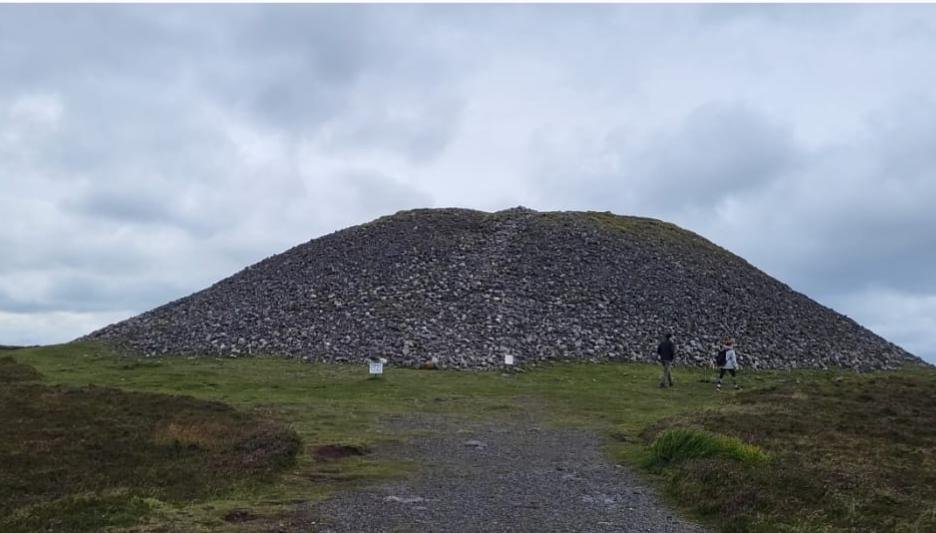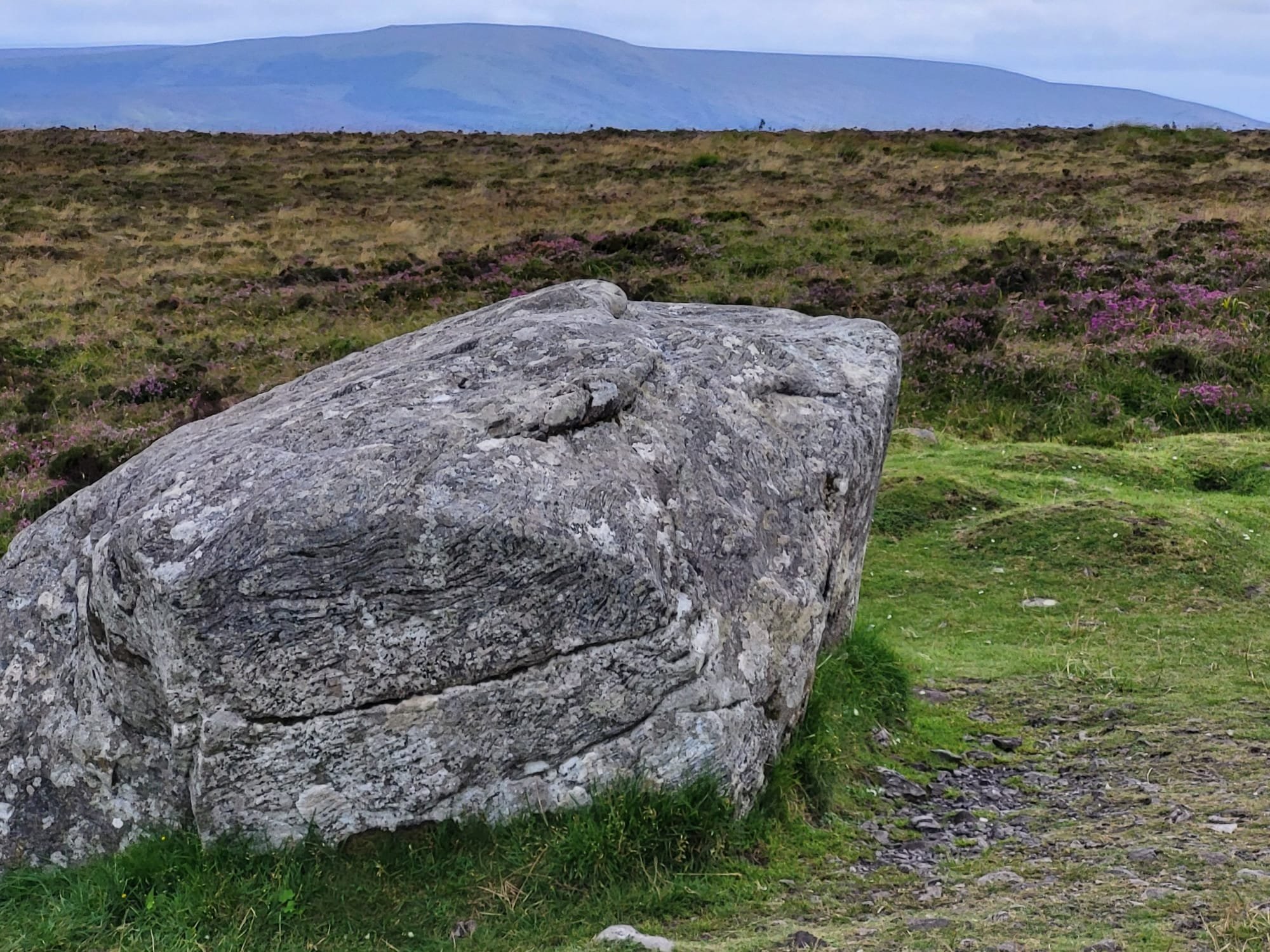Medb’s Tomb, Knocknarea Hill, County Sligo
“Queen of the invisible host, who sleeps high up on Knocknarea, in an old cairn of stones” W.B Yeats
In the immortal words of Sligo native W.B Yeats, atop Knocknarea hill you will find this fairy queen’s cairn, but best visit Medb in the day to avoid her fairy strey.
Approaching Medb’s Tomb from the Glen road Carpark
Yes, indeed, leaving this imposing site to take one of its many similar trails, it is easy to get turned around. Better to leave before dusk, because when darkness falls and fog rolls in, you’ll be glad you left when you did. Best to be back in the comfort of your warm living room, curled in front of the open fire with a hot drink and a page turner close to hand.
Medb’s tomb is a monumental cairn located in west Sligo at the top of Knocknarea hill. Judging by its placement and those of the surrounding smaller ones, Knocknarea Hill was clearly a site of great importance to its Neolithic builders. A place where their earth met the heavens.
This site was sacred to people of the time - and no doubt a place where rituals and other ceremonies were performed, in which large gatherings of the local population would likely have taken part in.
These cairns are much more than just burial mounds. They would have represented a stake to the land, and from the perspective of an outsider’s approach, the dominance their builders held over it.
The great cairn is the focal point of the hill’s monuments and is estimated by archaeologists to have been constructed around 3,400 BC, a few centuries before Newgrange and other Brú na Bóinne sites, while its smaller satellite cairns may have been built 200 years earlier.
The later burial of an iron age warrior queen, adds further importance of this site on the surrounding landscape and to the people who built it, further solidified its place in Irish history and mythology.
This cairn is believed by many historians to be the final resting place of a real-life 1st century queen. Roughly 56 metres in diameter and comprising of approximately 40,000 metric tonnes of limestone, this imposing site looms large above the surrounding landscape.
Since it has never been excavated it is anyone’s guess to the potential passageways which may lie beneath, however, given its similarity to other megalithic mounds of the era, it’s likely to house a cruciform passage. It is further speculated that somewhere inside, the queen may have been buried upright, to face her enemies, such was the tradition of the time.
As west Ireland’s largest megalithic cairn, only slightly smaller in scale to the behemoths of the Boyne valley, and Ireland’s most visually dominating Neolithic monument, it is well worth a visit. Not only the for the sake of this majestic site but also for the stunning views of the surrounding landscape. The vantage point from Knocknarea hill directly overlooks the Strandhill Beach, Sligo bay, and the coastline beyond, and offers sweeping views of the county’s countryside, including the plateau of its famous Benbulben table mountain.
View of Benbulbin from Knocknarea Hill
Large boulder near the site of the major cairn
Information board at the foot of the site



